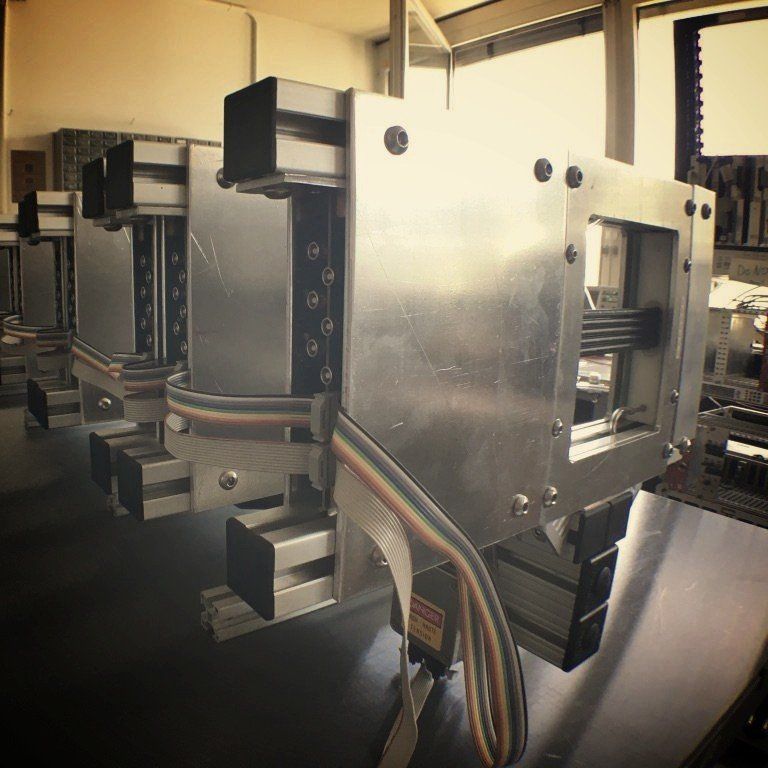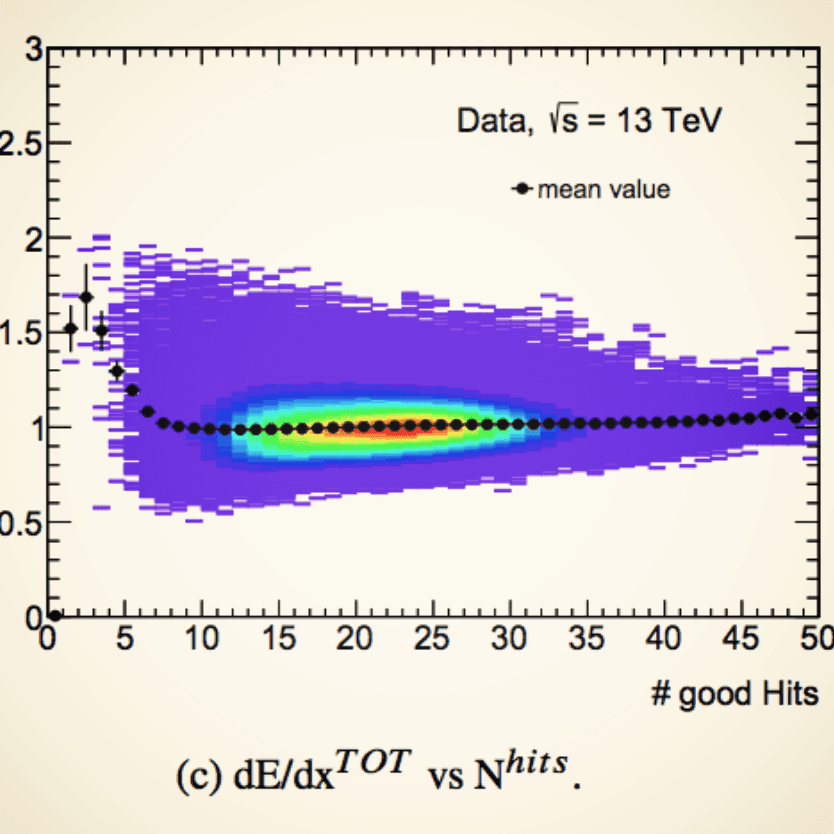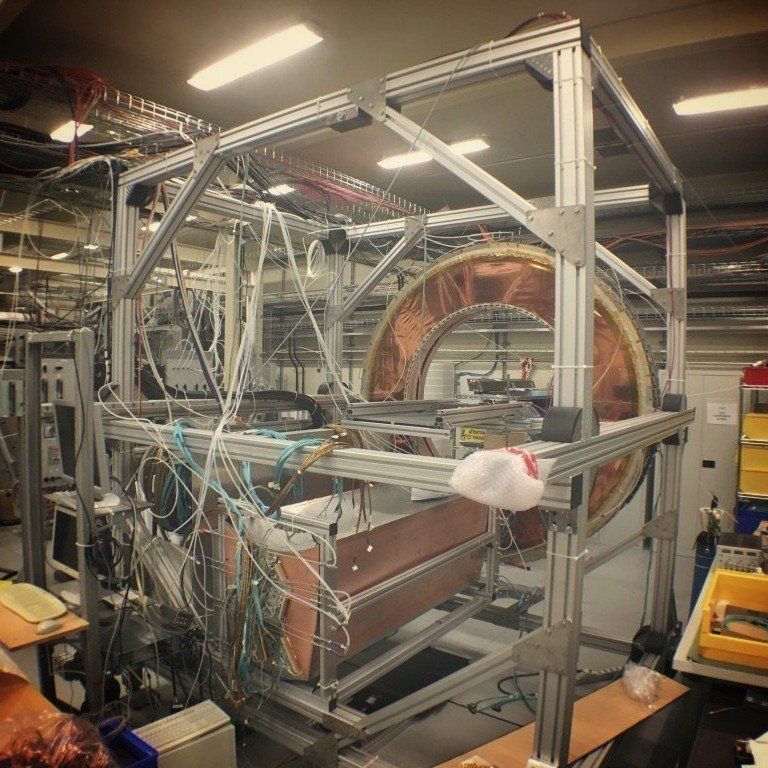The ATLAS TRT FastOR Trigger For Heavy Ions in the LHC
During the 2023 Pb+Pb run, I contributed as Run Coordinator and DAQ Expert to the successful deployment of the TRT FastOR Level-1 trigger at ATLAS.
Working alongside the TRT team, I helped configure and tune the system, enabling sensitivity to low-pT leptons critical for ultra-peripheral collision studies.
My role focused on DAQ-side software, real-time diagnostics with hardware, and ensuring stable integration into ATLAS data-taking.
This trigger enabled key measurements such as coherent J/ψ → μ⁺μ⁻ production, later published in an ATLAS CONF note.
Publications: ATLAS-CONF-2025-003 (Geneva, 2025)
Media: Featured in ATLAS post on X.com (Twitter)
Fast analysis toolkit for GaAs detector
There is plenty of instruments developed by the Timepix Analysis Group
for viewing and browsing the clustered files. However, there were no solutions to inspect Transition Radiation photons (TR). The TRD group has developed ROOT scripts to reconstruct TR and initial particle clusters and analyse data recorded by GaAs pixel detector.
My goal was to conternize ROOT algorithms with Docker and glue containers in the nice robust data flow to allow shifters inspect data quality during TestBeam. Each script was covered by unit tests. The synergy of Docker and Python allowed building an GUI application that can run on any OS.
Technologies: Python, Docker, GIT, Linux, Windows, Timepix
Search for heavy long-lived multi-charged particles in proton-proton collisions using the ATLAS detector
A search for heavy long-lived multi-charged particles is performed using the ATLAS detector at the LHC. Data with an integrated luminosity of 36.1 fb−1 collected in 2015 and 2016 from proton-proton collisions at √s = 13 TeV are examined.
Responsible for full Z → μμ analysis and all the related plots, both for data and simulation.
Publications: Phys. Rev. D 99 (2019) 052003
Data acquisition for TRD prototype
Data AcQuisition system, monitoring infrastructure and software have been developed for test beam setup. Test beam was done for Transition Radiation Detector
prototypes tests as part of SAS (Small Angle Spectrometer) R&D program, one have got to be used for hadrons identification at small angles and with small transverse momentum at LHC energies. Final TDAQ product have been used as a core for data acquisition system in BL4S
project at CERN.
Technologies:
C/C++, Bash, Python, XML, GIT, CMake, Linux, ATLAS TDAQ packages
Publications:
WATCH VIDEO
ATLAS TRT dE/dx tool optimization
Since TRT detector
has two threshold signal component, it's impossible to provide direct energy losses measurements on track. New approach for dE/dx
calculation with Xenon and Argon gas mixtures at high occupancies have been developed. Based on comparison between data and MonteCarlo simulations for the new dE/dx estimators, calibration procedure for Argon mixture have been developed and validated. Existed TRT dE/dx package have been significantly updated and integrated into 21st release of the ATLAS SW (Athena).
Note: ATL-COM-INDET-2016-088
ATLAS TRT test bench upgrade
TRT test bench represents a full TRT TDAQ chain - wedge of the Barrel TRT equipped with front-end electronics and connected to the TRT TDAQ system. In 2014 parts of this test bench have been removed to be used as spare one for TRT detector in the ATLAS cavern and test bench have no longer provided service for software and hardware tests. I was responsible for test bench upgrade after two years of shutdown and had made it completely operational. This required software updates, SVN to Git and CMT to CMake migration, as well as replacement of obsolete electronics.
Technologies:
C/C++, Bash script, Python, XML, GIT, SVN, CMake, CMT, Linux, ATLAS TDAQ packages, JIRA
Note: ATL-COM-INDET-2016-089
Geant4 simulation for MicroScint project
Development of a new generation of liquid scintillation detector based on microfluidics with high spatial resolution and increased radiation hardness.
The device consists in a single microchannel filled with a liquid scintillator, defining an array of liquid-core waveguides, each independently coupled to a photodetector.
My responibility was to perform full set of Geant4 simulations for MicroScint prototype and showing technological proof of concept.
Technologies:
C/C++, Bash, ROOT, Geant4, Git
Web page: CERN microsystems engineering







